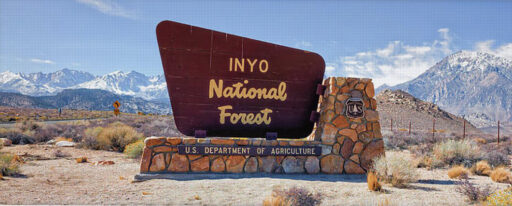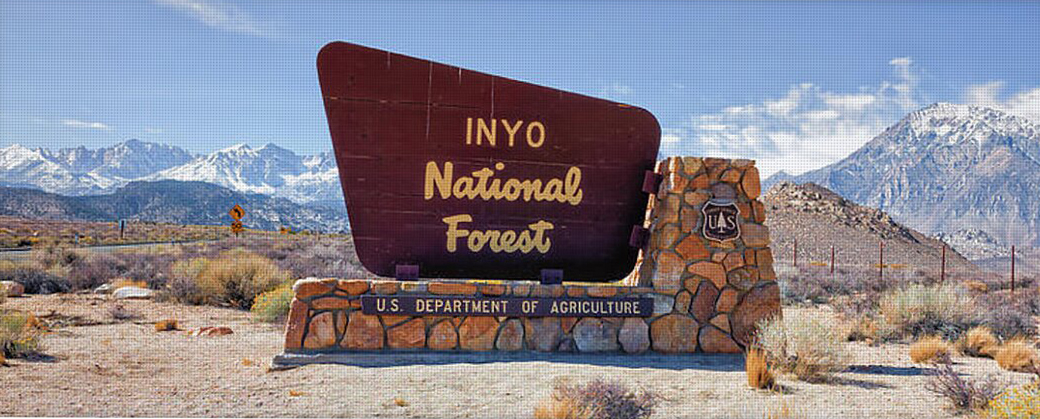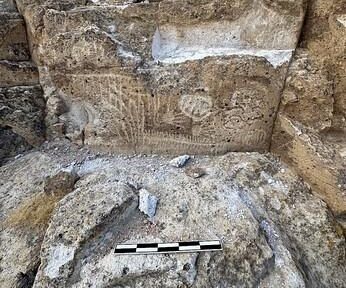Land Acknowledgment: Payahuunadu has been, and continues to be, the homeland of the Paiute (Nuumu), Shoshone (Newe), and Timbisha peoples. This land acknowledgment honors the original inhabitants of the Eastern Sierra and the tribes who remain here today.
If you’ve hiked Yosemite, camped in Inyo National Forest, or visited Death Valley, you’ve benefited from the work of wildly passionate and overworked public lands employees. But with the latest budget cuts under the Trump administration—now supercharged by Elon Musk’s Department of Government Efficiency (DOGE)—those workers are disappearing.
Beyond the overflowing trash cans and unmaintained trails, there’s another layer to this: we rely on public lands to keep our economy alive. Inyo counties biggest employer is government. We all have friends or family that work for NPS and USFS. It is too early to determine outcomes, but as park rangers and forest service workers get cut, there will likely be deeper ramifications that we will feel across our local economy.
The Cuts: What’s Actually Happening?
Since returning to office, the Trump administration has slashed thousands of federal jobs, and the National Park Service (NPS) and U.S. Forest Service (USFS) are taking serious hits.
🔥 NPS is losing roughly 1,000 employees, including rangers, maintenance crews, and visitor center staff.
🔥 USFS is down over 3,400 workers, affecting trail maintenance and recreation management.
🔥 Musk’s DOGE initiative (yes, it’s actually called that) is pushing for “efficiency” in government, but critics argue it’s starving public land agencies of the resources they need to function.
TL;DR: Even if some of this is walked back, there will be fewer rangers, fewer maintained trails, fewer cleaned-up campgrounds, and fewer people watching over your favorite outdoor spots.
What This Might Mean for Your Next Trip

If you’re hitting the trails this summer, be prepaired that there might be challenges.
🚫 More closures – Visitor centers, campgrounds, and even trails could close due to lack of staff.
🚫 More trash – With fewer maintenance workers, expect overflowing bins and more human-made disasters (yes, we mean toilet paper piles).
🚫 Riskier conditions – Fewer rangers mean slower emergency response times and fewer safety patrols.
🚫 More wear-and-tear – With maintenance budgets slashed, trails will erode faster, restrooms will be less maintained, and fire risks will go up as overgrown brush piles up.
Basically, if you love visiting national parks and forests, you’re about to see the effects of these cuts firsthand.
The Debate: Is This Just Government Fat Trimming or a Real Problem?
DOGE is looking for help from the general public!
— Department of Government Efficiency (@DOGE) February 17, 2025
Please DM insight for reducing waste, fraud, and abuse, along with any helpful insights or awesome ideas, to the relevant DOGE affiliates (found on the Affiliates tab). For example, @DOGE_USDA, @DOGE_SSA, etc.
We will add…
Supporters of the budget cuts say it’s about reducing government bloat—that agencies like NPS and USFS can be run more efficiently, and that private partnerships can step in to fill the gaps.
Brilliant protest. Yosemite National Park workers hung an upside-down American flag — traditionally a symbol of distress or a national threat — thousands of feet off the ground on the side of El Capitan. pic.twitter.com/jWOBfV4sRa
— Dr. Lucky Tran (@luckytran) February 23, 2025
But conservation groups and former public lands employees argue this isn’t fat trimming—it’s cutting into the bone. They warn that privatization of public lands could lead to:
💰 Higher entrance fees and more commercialization
💰 Less environmental oversight and more development
💰 A shift from conservation to profit-driven management
Whether you see this as a necessary budget move or an attack on public lands, the reality is the same: Fewer resources mean more strain on the parks and forests we all use.
With fewer rangers and trail crews out there, it’s on us to help keep our outdoor spaces clean, safe, and open. Here’s how:
1️⃣ Follow Leave No Trace (Like, Actually Follow It)
• Pack it in, pack it out—even biodegradable trash like orange peels.
• Take it one step further – don’t dump your trash at trailheads, dump it before you get there and haul your trash back down. Let’s do our part and avoid overflowing trashcans.
• Stay on the trails—cutting switchbacks destroys ecosystems and takes work to correct.
2️⃣ Volunteer for Trail Cleanups
• Many national forests and parks rely on volunteers to keep trails open.
• Even better, make every hike a trail clean up.
• Look for groups like Friends of the Inyo, the Sierra Club, or local trail associations like Sierra Forever or if you are bad ass, sign up for Inyo SAR.
• Support nonprofits that step in where the government falls short: Sierra Forever
3️⃣ Respect Fire Season & Camping Rules
• Illegal fires are how we lose forests—check restrictions before lighting up.
• Camp only in designated areas to protect fragile ecosystems.
4️⃣ Advocate for Public Lands
• Whether you agree or disagree, you can express to your representatives that outdoor recreation is a economic driver for our rural community and we need base level funding to keep our visitor centers open to issue permits, trash collection and trail maintenance. Otherwise our local small businesses and tax collection will be deeply impacted. If you live in 93545 that is Kevin Kiley. Drop him a note.
Final Thoughts: The Wild Needs our Help
Whether you think these cuts are justified or a reckless move, one thing is clear: Public lands need care, and right now, they’re getting less of it.
If you love hiking, camping, climbing, fishing, or just road-tripping through Inyo’s wild places, now’s the time to step up, volunteer, and hold leadership accountable.
A message from AWE: In the ’80s, tossing trash out of car windows was commonplace—until the “Don’t Be a Litterbug” campaign came along and changed behavior on a massive scale. At AWE, we believe the same power of messaging can transform how people care for the places we love to travel and explore. Most people are good, and travel is inevitable—every hike, swimming hole, and climbing spot is just a few clicks away. As content creators, we believe we have a responsibility to weave Leave No Trace principles into everything we share, inspiring travelers to recreate responsibly and minimize their impact on the incredible places so many of us cherish. Your actions matter: where you walk, how you park, how you treat locals, and even how loud you play your music. It all makes a difference. Search “Leave No Trace” to learn more about responsible recreation and how you can help protect the wild spaces we love and share.






